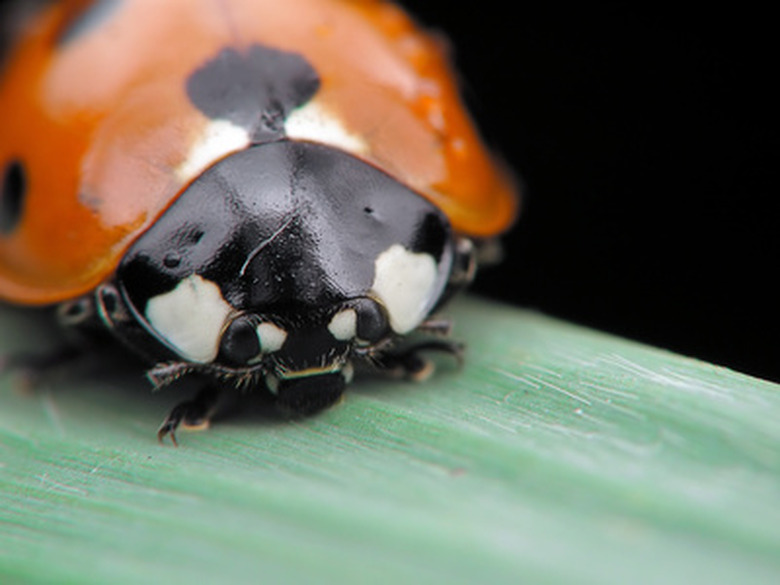Ladybugs & Tomato Plants
Tomato plants can become prone to various pathogens and diseases once weakened. Weakened plants can fail to bloom or yield fruit, lose leaves, and eventually die. The original cause of these problems often comes from the infestation of the tomato plant by aphids or spider mites. These insects literally suck the sap from the plant, causing malnutrition and a weakened state. Ladybugs are nature's way of preventing this occurrence.
Natural Function
Ladybugs are predator insects. These bugs feed on various other insects found on or near tomato plants, including aphids, spider mites and ants. Since both mites and aphids reproduce quickly to establish large colonies, ladybugs have become the natural balance to keep these insects from overpopulating an area.
- Tomato plants can become prone to various pathogens and diseases once weakened.
- These insects literally suck the sap from the plant, causing malnutrition and a weakened state.
Benefits
Having beneficial predator insects such as ladybugs and lacewing moths helps reduce and eventually eliminate aphid or spider mite colonies. A side benefit is the reduction or relocation of ant colonies nearby because ants use aphids in the production of honeydew. Potential pathogens will have reduced chances to occur because reduced aphid and mite populations will fail to spread to tomato plants nearby.
Disadvantages
The biggest disadvantage to using ladybugs for pest control on tomatoes is that when the weather gets too cold, ladybugs often find their way into buildings looking for warmer temperatures. During winter, ladybugs hibernate and can be found in large groups in homes. A secondary disadvantage is the possible relocation of the colony before hibernation should the food supply run out.
Keeping Ladybugs
For ladybugs to provide the most benefit to your tomato plants, the ladybugs need to be around long enough to start a colony on your property. If ladybugs are released directly from the packaging a portion will fly away while the remainder seek out aphids on your plants. Once the aphids are eliminated more ladybugs will leave. Preventive measures can be taken to resolve these issues. Ladybugs will not fly during nighttime nor during cooler weather; releasing ladybugs during a cool night keeps the bugs nearby. Before releasing ladybugs, spray a mixture of equal parts water and soda on the bugs. The sugar causes the wings to stick, keeping the ladybugs in the area while the wings dry out. During this time the female ladybugs will begin to lay eggs. Since ladybugs are territorial, they will consider the garden where they are born as home and continue to return there.
- Having beneficial predator insects such as ladybugs and lacewing moths helps reduce and eventually eliminate aphid or spider mite colonies.
- A side benefit is the reduction or relocation of ant colonies nearby because ants use aphids in the production of honeydew.
Cautions
Reduce or avoid broad-spectrum insecticides in the garden where ladybugs have been placed. These insecticides kill any insects they come into contact with, including ladybugs. Using an insecticidal soap or oil is safe around ladybug populations. Keep the garden and the area around it humid or wet; ladybugs cannot survive dry conditions.
